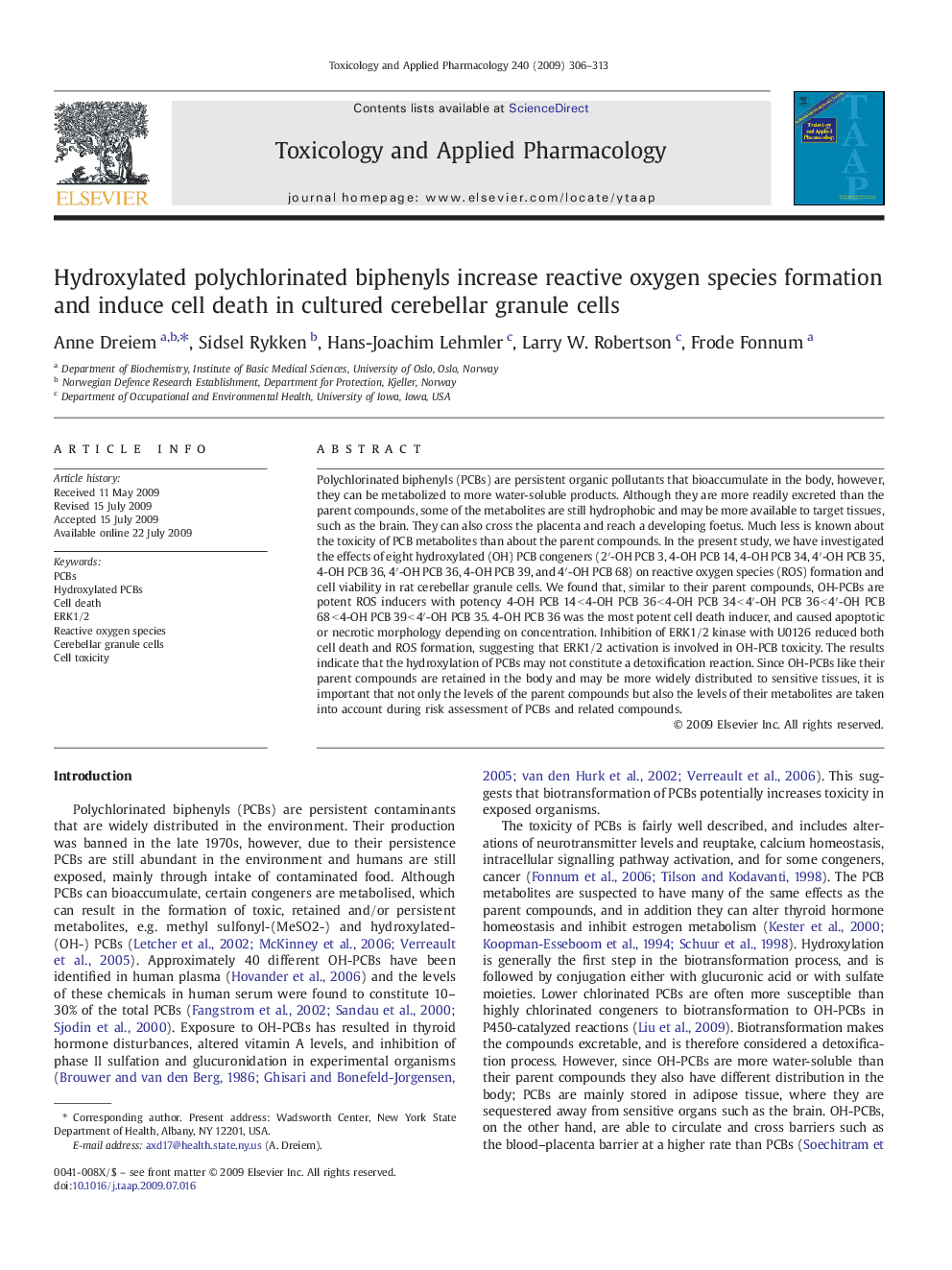| کد مقاله | کد نشریه | سال انتشار | مقاله انگلیسی | نسخه تمام متن |
|---|---|---|---|---|
| 2570418 | 1128584 | 2009 | 8 صفحه PDF | دانلود رایگان |

Polychlorinated biphenyls (PCBs) are persistent organic pollutants that bioaccumulate in the body, however, they can be metabolized to more water-soluble products. Although they are more readily excreted than the parent compounds, some of the metabolites are still hydrophobic and may be more available to target tissues, such as the brain. They can also cross the placenta and reach a developing foetus. Much less is known about the toxicity of PCB metabolites than about the parent compounds. In the present study, we have investigated the effects of eight hydroxylated (OH) PCB congeners (2′-OH PCB 3, 4-OH PCB 14, 4-OH PCB 34, 4′-OH PCB 35, 4-OH PCB 36, 4′-OH PCB 36, 4-OH PCB 39, and 4′-OH PCB 68) on reactive oxygen species (ROS) formation and cell viability in rat cerebellar granule cells. We found that, similar to their parent compounds, OH-PCBs are potent ROS inducers with potency 4-OH PCB 14 < 4-OH PCB 36 < 4-OH PCB 34 < 4′-OH PCB 36 < 4′-OH PCB 68 < 4-OH PCB 39 < 4′-OH PCB 35. 4-OH PCB 36 was the most potent cell death inducer, and caused apoptotic or necrotic morphology depending on concentration. Inhibition of ERK1/2 kinase with U0126 reduced both cell death and ROS formation, suggesting that ERK1/2 activation is involved in OH-PCB toxicity. The results indicate that the hydroxylation of PCBs may not constitute a detoxification reaction. Since OH-PCBs like their parent compounds are retained in the body and may be more widely distributed to sensitive tissues, it is important that not only the levels of the parent compounds but also the levels of their metabolites are taken into account during risk assessment of PCBs and related compounds.
Journal: Toxicology and Applied Pharmacology - Volume 240, Issue 2, 15 October 2009, Pages 306–313